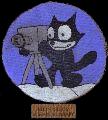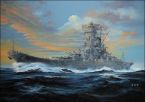Wirraway_Ace
Posts: 1400
Joined: 10/8/2007
From: Austin / Brisbane
Status: offline

|
quote:
ORIGINAL: Canoerebel
Para Fragments: Steve and I have discussed this at length. Bottom line is that we have mutually agreed not to use tiny fragments of paras or sub-born infantry to engage purely in reonnaissance missions. I explained to Steve that my defination of "lame-gamey play", which I am just now trying to define in my own mind, is two-fold: (1) is the move wildly unrealistic and/or does it offer a side a unrealistic result; and (2) is there an effective counter to the move. If a move is wildly unrealistic (such as providing complete garrison/AV/fort information by para-fragment assault) and if there is no way to counter the move, it's suspect.
That's why I don't have a problem with the use of picket ships. It provides a reasonable amount of knowledge not otherwise obtainable though it should have been historically and my opponent can counter the use of pickets. However, I have come to rely more and more on patroling ships (DDs, small ASW TFs, small minelayer TFs) as opposed to merchants. I still employ the latter, but lean more towards the former. There is no freaking way Japan could have used massed carriers just off the West Coast in March 1942 without the Allies knowing about it; but in this game it's totally possible unless I post picket ships.
Oh great canoe-borne rebel, I humbly submit to you a counter opinion of an old paratrooper.
Bottom Line Up Front: The use of platoon or company sized units (say 3-10 squads) for operational reconnaissance should be considered acceptable regardless of whether delivered by airdrop, flying boat, fast transport or submarine transport.
Reasons against:
1. Unrealistic - The troops were not employed in this way
2. Game Engine Exploit - Intelligence gained is too precise (i.e. AV, unit names, prep)
Reasons for:
1. Realistic, if slightly anachronistic. The Alamo Scouts were certainly examples of troops employed in this manner during the War in the Pacific, although operational reconnaissance and strategic reconnaissance, and the development of Special Forces, are more properly considered missions that developed as a result of WW2 experience. That being said, nearly all of our concepts of tactics, operational art and strategy are anachronistic.
2. Not an exploit of the game engine – The game allows players a much more precise understanding of their own forces strength and there are other ways to collect a similar understanding of the enemy. We know the exact experience of a unit we are considering for a mission, its exact combat power, and the exact strengths and weaknesses of its commander. By conducting multiple air attacks, we can identify which enemy units occupy the hex, whether they are fragments or the parent unit, and with perfect knowledge of the enemy OOB, deduce the combat power. We can do the same thing by naval bombardment. I don’t understand why this is possible within the game model, but it is. Sending in a element of a specialized unit such a one of the airborne SNLFs, US Marine Raiders, Aussie Commandoes, etc, to recon an objective seems very reasonable by comparison.
Bottom Line: I strongly support the use of a small airborne unit (parafragment) for an operational reconnaissance of Cocos Island (the main atoll is only 5.3 square miles) by the Japanese. It is simply good operational preparation. There is no defense against it except that you know he is interested enough to lose a platoon of highly trained men, and you can reinforce or withdraw forces while he prepares. I also really like the submarines nearby. If I were trying to do the thing realistically, I would post a submarine in the target hex so the recon platoon would relay the collected intelligence by FM to a submarine if their HF set failed, and be withdrawn after the mission was conducted. Of course, in the game, there is unlikely to be a unit to withdraw after the shock attack….
< Message edited by Wirraway_Ace -- 8/1/2012 6:02:17 AM >
|
 Printable Version
Printable Version






















 New Messages
New Messages No New Messages
No New Messages Hot Topic w/ New Messages
Hot Topic w/ New Messages Hot Topic w/o New Messages
Hot Topic w/o New Messages Locked w/ New Messages
Locked w/ New Messages Locked w/o New Messages
Locked w/o New Messages Post New Thread
Post New Thread